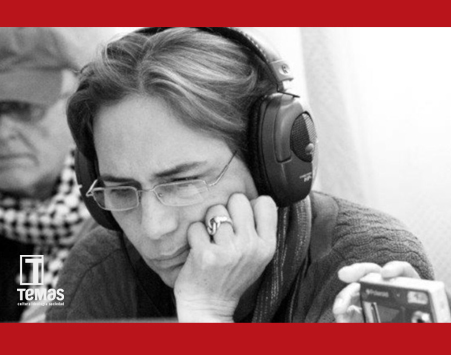This text is part of the Catalejo series Where is independent cinema going?
Catalejo: What does independent cinema mean in Cuba? What are its characteristics?
Magda González Grau: I think that independent cinema in Cuba is a very interesting phenomenon. After many years of an institutionally embedded, centralized cultural system, it was accepted that artists in the plastic arts, writers and even composers could consider themselves independent, and decrees-laws which recognized their labor conditions and guaranteed their social security and other benefits had been approved. However, for audiovisual artists this took a lot of work.
The worst thing was that, day after day, reality showed that there was an important and strong movement among these artists, which had even organized themselves in groups, or small enterprises to realize their work, and had made feature films that had obtained international prizes. It was like the ostrich policy: “If I don’t recognize them, they don’t exist.”
For me, independent cinema in Cuba is a natural result of how the country works. Movies are expensive, and the State was producing fewer each year because there were no funds to finance them, as was the practice since 1959, with a large staff, equipment and celluloid that came from socialist countries, etc. In the nineties, Cuban film survived thanks to co-productions. The crisis caused the collapse of ICAIC [Instituto Cubano del Arte y la Industria Cinematográficas], which was sticking to an unsustainable way of doing things.
With the decrease in cost of the digital technology, and the graduation of dozens of artists from ISA [Instituto Superior de Arte] and the International School [of Film and Television] of San Antonio, it was inevitable that a film industry outside of this institutionalization would spring up. And if to this we add the fact that the “institutional” filmmakers—who have always been very restless—understood that this was a question of life and death and began to make proposals for a transformation from within ICAIC, what happened was in fact totally natural.
In my view, Cuba’s independent cinema is one of the most revolutionary movements in the cultural sphere during the past years, because—unlike the plastic arts and literature, which are produced in solitude—it is a manifestation which implicates many fields and many artists. I think it is because of this complexity that there was such resistance to accept its reality.
C: What is the role of ICAIC in this new phase of cinematographic production?
MGG: ICAIC’s role has been and still is essential. Since 2008, when I was chair of the Committee on Cultural Economy, we began to work with Camilo Vives and Lía Rodríguez—both at that time in charge of Production at ICAIC. I remember that the Committee was able to get the most important producers to meet every week with the Institute for an exchange of ideas of how it needed to change what was now obsolete. And from that came a proposal to continue operations, which was taken to the VII Congress of UNEAC [Union Nacional de Escritores y Artistas Cubanos], but it all ended there.
After this, we came together in the so-called G20, and again started to work hard, convinced that if we didn’t do it, no one would, because the Institute, by order of the State and the Party, had initiated an analysis which skimmed the surface; it was like a light shaking of the structure, which really needed an earthquake to function properly again.
At the start, there was immense resistance to this effort, on the part of the old management of ICAIC and the Ministry of Culture, but first in Roberto Smith, and then Ramon Samada [the previous and current Presidents of ICAIC] we found intelligent interlocutors who understood and facilitated the work.
Now ICAIC is the director and controller of everything that has been legislated for independent cinema and, in my opinion, it is doing it well in spite of the fact that these are new ways which are constantly in collision with antiquated thinkers.
An important thing was that Samada understood how useful it is to work in dialogue with the artists, although sometimes this becomes difficult. Now everything that needs to be done to implement new laws, is being done in agreement with us, and consulting with us at every step. That is novel, and not practiced in all artistic fields.
C: What avenues do the new regulations open for cinematographic creation? Which are its possibilities and its limits?
MGG: All avenues are open. The creation of the Registry of Cinematographic and Audiovisual Creation recognizes a profession that confers rights to artists in this field. A legal framework exists that supports them and removes the suspicion triggered in our country by a camera in the street. One can hire people and be hired legally, as natural persons, Cuban and foreign. One has a right to social security, including maternity leave for filmmakers. The Audiovisual Development Fund was created, fundamentally with governmental financing, to support the best independent feature film projects. Groups of Artistic Creators were founded, which are basically producers, who can open bank accounts for their projects, which solves the absurd situation that providing financing to a producer of a film should be seen as personal income and thus generate tax payments.
In brief, the legislation that was passed was designed by the producers themselves, and approaches what we have been dreaming of, but of course, it is not perfect. More things will have to be solved along the way, but without doubt this creates a new and different scenario for Cuban cinema and audiovisual media. Now it is up to the producers to create more and better works.
Translation by Catharina Vallejo.


Deje un comentario